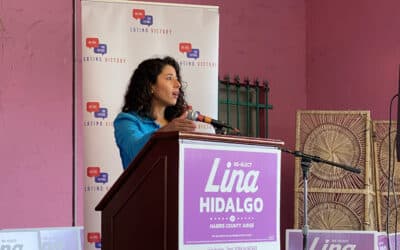When it comes to public education, the past decade has shown itself to be a lengthy failure in Republican governance.
Today, Texas is ranked among the worst states in the nation for per-student funding by the National Education Association.
Ironically, its ranking of 36th in the nation is something worth celebrating. The state is just wrapping up an 8-year path to recovery following a 2011 vote by Texas Republicans to gut public education spending.
That vote, which also included cuts to Medicaid and social safety net programs, and the subsequent steps Republicans took (or rather, didn’t take) to prevent the ensuing catastrophic shock to the entire state’s public education system is one of the strongest examples of how the GOP– despite two decades of being in power and counting– have been unable to deliver on even the most basic needs of Texans and their children.
“I think it’s fair to say we’re back to where we started,” said Eva DeLuna Castro, a state budget analyst with the Center for Public Policy Priorities told the Signal.
On average, Texas spends $9,500 per student, according to the Texas Education Agency. The latest Texas Comptroller data shows that between 2007 and 2017, operating expenditures per student rose by just 3 percent, from $9,239 to $9,500– again, not a particularly great number.
“We’re losing ground in real terms once you bring in inflation,” Castro said. “We’ve constantly run into this statement that we’re throwing money at schools. But we’re not doing that. We’re taking money out of the formulas and letting local property taxes make up the difference.”
The dip seen in the chart above– dubbed by the University of Texas and CPPP as “a lost half decade”– indicates where Texas’ 82nd Legislature voted to slash $5.4 billion in public education.
How we lost those five years
At the time of the cuts, Texas was facing a forecasted shortfall of $27 billion in the state’s 2012-13 budget due to the Great Recession.
Instead of pulling from the state’s Rainy Day Fund– which boasted around $9.4 billion at the time– Gov. Rick Perry, who is now caught up in the Trump/Ukraine scandal, directed the state’s Republican supermajority to make deep cuts that, it would turn out, go on to disproportionately affect high-poverty districts the most.
Perry, who was then mulling over a presidential run, and the legislature’s newly-elected wave of Tea Party lawmakers made it clear they would not raise taxes (on the wealthy or otherwise) to pay for the looming budget crisis.
Then, in a stroke of good fortune, the predicted budget shortfall never materialized. Instead, Texas found itself with a surplus of $2.6 billion in 2013. During that year’s session, lawmakers restored $3.4 billion of the state’s education funding that was cut in 2011. But, by then, the damage had already been done.
“The makeup money in 2013 didn’t do much,” Rob D’Amico, communications director for Texas’ American Federation of Teachers, said in an interview. “The cut was a huge hit to districts. Class sizes went up. Money to spend on other resources, like special education, were all impacted.”
Following the cuts, a shocking two-thirds of school districts in the state were forced to use emergency funds to deal with the shortfall in funding, more than 25,000 teachers and support staff– from special education teachers to bus drivers– were laid off, and the funding gap between rich and poor districts grew more in Texas than in 43 other states.
Finally, in 2015, the state fully restored what Republicans had cut in 2011. But by then, the number of students enrolled in Texas schools had grown and when accounting for inflation, Texas still hadn’t returned to the per-student funding levels seen in the decade prior.
Lt. Gov. Dan Patrick
More recently, the biggest obstacle to positive change in the state’s education spending has been Lt. Gov Dan Patrick.
“In the 2017 session, we thought we had all this momentum to finally fix school finance and make it more equitable and add more funding,” D’Amico said.
That year, Patrick blocked a bipartisan bill that passed 131-11 in the Texas House and would have added $1.8 billion to public school funding. “He’s been the chief impediment to all progress moving forward with public education,” D’Amico.
During this year’s session, the Texas Legislature added $6.5 billion to public education funding, finally putting a stop to a five-year, $5 billion dollar budget gap that had developed because of careless cuts almost a decade earlier.
Based off the approved budget for the next two years, Texas has finally returned to where it was around 2008 in state education aid per pupil– which again, was not worth bragging about under Perry, or now under Gov. Greg Abbott.
Fernando covers Texas politics and government at the Texas Signal. Before joining the Signal, Fernando spent two years at the Houston Chronicle and previously interned at Houston’s NPR station News 88.7. He is a graduate of the University of Houston, Jack J. Valenti School of Communication, and enjoys reading, highlighting things, and arguing on social media. You can follow him on Twitter at @fernramirez93 or email at fernando@texassignalarchive.com




